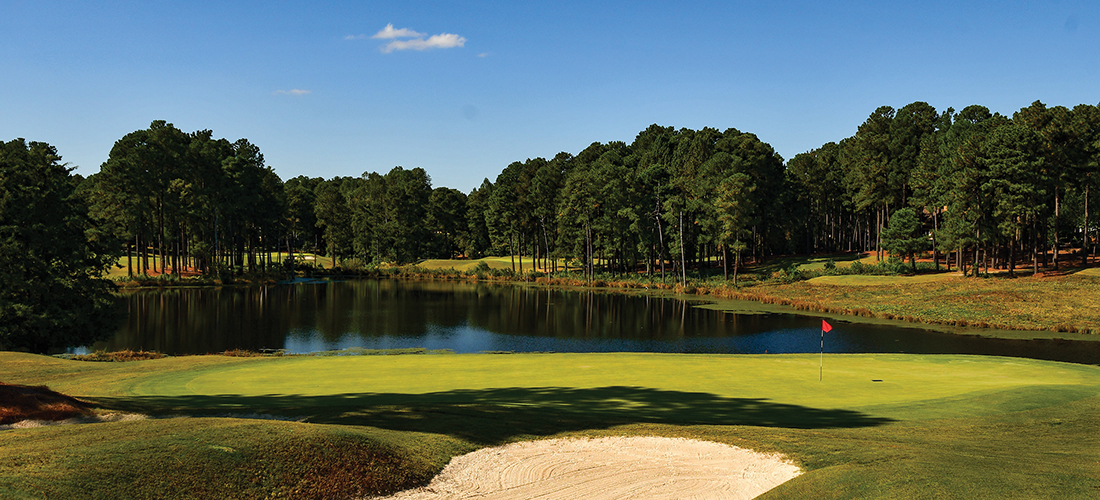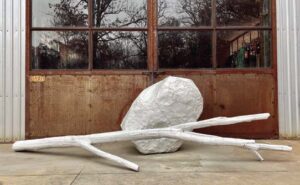
Holly Days
Of presidents and penalty strokes
By Lee Pace
As a lifelong hunter and fisherman, George H.W. Bush had a high regard for the environment and the importance of preserving wetlands. As vice president under Ronald Reagan in the 1980s, he saw how wetland protection had become a hot-button political issue. Those areas of land covered by water at least part of the time serve as homes for wildlife, buffers for floodwaters and filters for pollution.
But they can also provide obstacles to those wanting to grow crops and build highways, houses, factories and, yes, even golf courses.
Bush seized on the environment as a key platform issue in his race against Michael Dukakis as the 1988 presidential campaign unfolded. He promised that his administration would set a national goal of “no net loss of wetlands.”
Bush took office in January 1989, and the EPA and Army Corps of Engineers soon had new marching orders on what they would or would not approve in future industrial, residential and agricultural development. A Petri dish of that policy and a crystal clear line-in-the-sand of its effects can be found on the 36 holes of golf at Pinewild Country Club, located just 2 miles west of the village of Pinehurst.
Architect Gene Hamm designed the Magnolia Course in the mid-1980s, built it through 1988 and opened it a year later. There were no restrictions on which areas of the land could be filled in. At 7,446 yards, the course falls behind only Pinehurst No. 2 (7,588) and Quail Hollow (set at 7,600 yards for the 2017 PGA Championship) in the state of North Carolina in terms of length from the championship tees.
The Gary Player-designed Holly Course followed nearly a decade later and opened in 1996. If Player, his lieutenants and the club’s owner wanted to fill in wetlands, they would have to create them elsewhere on the property — a far too complicated and expensive proposition.
Thus the Holly Course hopscotches wetlands, streams and ponds to some degree on roughly half its holes. Some hazards might not require a full carry to safety, but they’re positioned over enough of the fairway or on a line to the green to give the player considerable pause for thought. The 12th and 13th are routed around a lake and its adjunct wetland area, the former hole a par-3 with a full carry over water and the latter a par-4 turning left-to-right with a drive over the lake, and an approach into the green over a patch of wetlands.
Among clubs in the Sandhills with 36 holes or more, the Magnolia and Holly present perhaps the most interesting set of contrasts.
“The Magnolia is right in front of you; there are no tricks,” says Chris Little, the club’s general manager since 1998. “The length is there; it’s a difficult course. There’s more risk-reward on the Holly. There’s a lot of trouble on the Holly, but if you avoid the water, there’s more chance to make some good scores.”
“The Magnolia is more meat-and-potatoes; the Holly allows a bit more creativity,” adds Gus Ulrich, the club’s director of instruction since 2008. “The Holly demands more precision, but you can make more birdies there. For the low-handicapper playing the back tees, the Magnolia’s a real challenge, among the best in town.”
Add those two regulation courses to the club’s nine-hole par-3 course, a three-hole practice track and a double-sided practice range with Ulrich’s teaching compound at one end, and you’ve got one of the most well-rounded and diversified clubs in the Sandhills. No wonder through September that the club had “for sale” signs on only four of some 900 residences within its 2,100-acre footprint.
Little believes that the coronavirus pandemic has helped the club’s stability beyond having lost all of its outside package business in the spring.
“People are working from home now. They’re moving away from the big cities, and the retirement process is being sped up,” he says. “It’s an hour-and-a-half to the airport from here. I have talked to people who say they’ve got three years until retirement, they can work from here and travel wherever they need for a couple days a month.”
When its gates opened in the late 1980s, Pinewild was mostly seen as a retirement community. Now the club has an active military component and numerous families with children.
“When we first joined in 1992, there was no such thing as children here — unless they were someone’s grandchildren,” says Don Power, a longtime member and resident since 2007. “Now there are five schoolbuses coming through and 150 children living here, last I heard. You see parents taking children to the practice range, to the pool, riding bikes. It gives the club a much more balanced feeling.”
The latest chapter in the Pinewild evolution was added over the summer of 2020 when the club rebuilt the greens on the Holly Course, planting Diamond Zoysia on the putting surfaces. The course was closed for June and July and reopened in August.
“After 25 years, it was time for new greens,” Little says. “The greens had shrunk over the years, we’d lost some pin positions, and with aerification and top-dressing they had sunk in some spots. Some of them weren’t getting good sunlight.
“We’re delighted with the results.”
Over the last decade, many clubs in the Mid-Atlantic “transition zone” have converted their greens from bent grass to one of the new hybrid Bermuda varieties better able to withstand the summer heat. Pinewild officials considered Bermuda but faced an added challenge of having a half-dozen greens sitting in shady areas surrounded by trees located on private property, limiting the club’s ability to thin out the tree cover. They opted for the Diamond Zoysia because it thrives in warm weather and without as much need of sunlight as other warm-weather grasses.
The job was handled in-house with direction from John Robertson, director of golf course maintenance, and Shawn Giordano, course superintendent. The greens were enlarged by approximately 1,700 square feet to a total of 5,500 each, on average, and the original contours re-established. Several bunkers were rebuilt to solve drainage issues. Little says the club plans a similar project on the Magnolia Course in 2021 and will likely convert the greens to hybrid Bermuda.
“The course plays differently now,” Little says. “We have pin positions we didn’t have since the course was constructed.”
“The Diamond Zoysia is perfect for this course,” adds Robertson. “It does well in hot weather and in the shade. It’s used a lot in South Carolina, where you have all the oaks and Spanish moss, and you can’t take the trees down.”
Early returns on the zoysia greens are that they’re healthier than the previous strain of bent but not as firm as Bermuda.
“The zoysia takes the energy out of the ball,” Little says. “It hits the green and absorbs the shock, then rolls just a little. It’s not like bent that hits and spins 30 feet back. It’s very dense grass.”
“There are a lot of forced carries on the Holly, and the greens accept shots better instead of them hitting and flying past, over the green,” adds Robertson.
Power and his wife, Joan, are natives of the Chicago area but lived their adult lives in Orange County, California. They were introduced to the Sandhills through a friend who worked for DuPont and attended regular client outings at Pinehurst. They bought a lot in Pinewild in 1992 and moved permanently in 2007.
Over the years as he’s moved up a set of tees and Power says he’s come to appreciate the appeal of the Holly Course more and more.
“Initially, I was not in love with the Holly,” he says. “The Magnolia is long and difficult. It’s been a U.S. Open qualifying course, so it has to be tough. Over the years, I’ve become more a fan of the Holly. It’s much more playable as you get a little older.
“I love what they’ve done with the Holly. The greens are spectacular. The zoysia has held up beautifully. We are very blessed and pleased. There are few divots and the ball holds. The greens are not extra soft, not extra firm, and they putt very true.”
And during this political season, it’s interesting to muse about how a presidential directive affected the playability of a golf course in Pinehurst. PS
Lee Pace has been writing about golf in the Sandhills since the late 1980s—the very time that Pinewild Country Club was founded.





